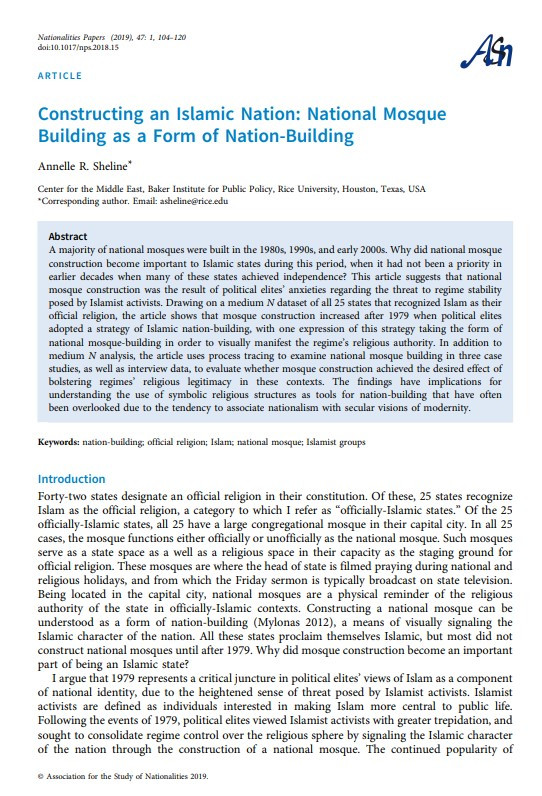
A majority of national mosques were built in the 1980s, 1990s, and early 2000s. Why did national mosque construction become important to Islamic states during this period, when it had not been a priority in earlier decades when many of these states achieved independence? This article suggests that national mosque construction was the result of political elites’ anxieties regarding the threat to regime stability posed by Islamist activists. Drawing on a medium N dataset of all 25 states that recognized Islam as their official religion, the article shows that mosque construction increased after 1979 when political elites adopted a strategy of Islamic nation-building, with one expression of this strategy taking the form of national mosque-building in order to visually manifest the regime’s religious authority. In addition to medium N analysis, the article uses process tracing to examine national mosque building in three case studies, as well as interview data, to evaluate whether mosque construction achieved the desired effect of bolstering regimes’ religious legitimacy in these contexts. The findings have implications for understanding the use of symbolic religious structures as tools for nation-building that have often been overlooked due to the tendency to associate nationalism with secular visions of modernity.
I agree to the terms outlined below:
You agree to upload and assign Mosqpedia Database the rights to use the content worldwide and in perpetuity across all current and future media platforms. Mosqpedia Database may edit, copy, adapt and translate your contribution.
The content will be distributed under the Creative Commons Attribution-Deed – Attribution-NonCommercial-NoDerivatives 4.0 International – Creative Commons
All data will be stored in line with data protection regulations.